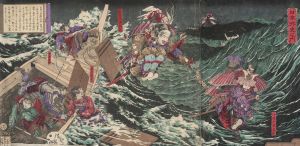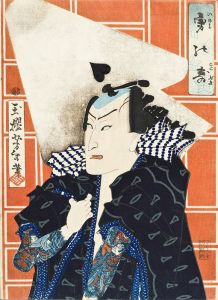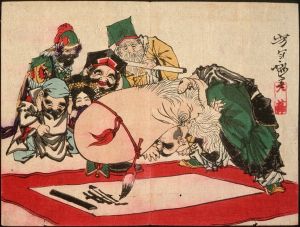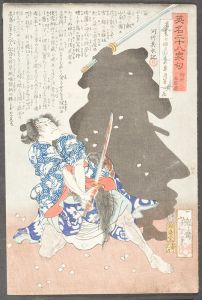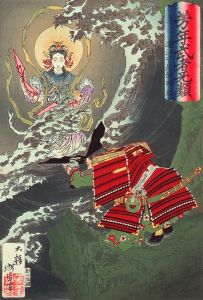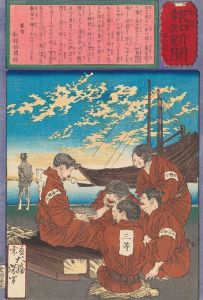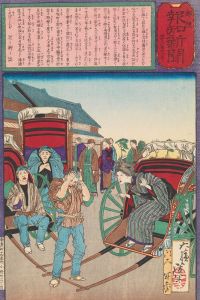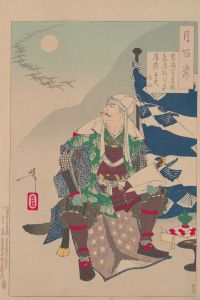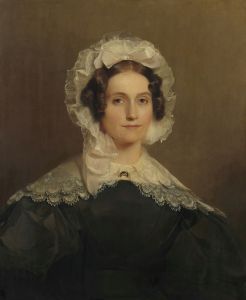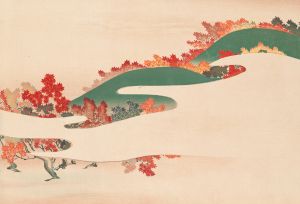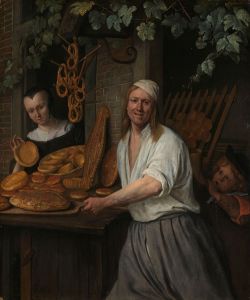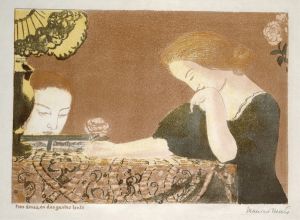
Expectant; The Appearance of a Fireman’s Wife in the Kaei Era
A hand-painted replica of Tsukioka Yoshitoshi’s masterpiece Expectant; The Appearance of a Fireman’s Wife in the Kaei Era, meticulously crafted by professional artists to capture the true essence of the original. Each piece is created with museum-quality canvas and rare mineral pigments, carefully painted by experienced artists with delicate brushstrokes and rich, layered colors to perfectly recreate the texture of the original artwork. Unlike machine-printed reproductions, this hand-painted version brings the painting to life, infused with the artist’s emotions and skill in every stroke. Whether for personal collection or home decoration, it instantly elevates the artistic atmosphere of any space.
Expectant; The Appearance of a Fireman’s Wife in the Kaei Era is a woodblock print by the renowned Japanese artist Tsukioka Yoshitoshi (1839–1892). This artwork is part of Yoshitoshi's celebrated series Fūzoku Sanjūnisō (translated as "Thirty-two Aspects of Customs"), which was published in 1888. The series is widely regarded as one of Yoshitoshi's masterpieces and a significant contribution to the ukiyo-e tradition during the late Edo and early Meiji periods.
The Thirty-two Aspects of Customs series depicts women from various social classes and time periods, showcasing their fashions, hairstyles, and lifestyles. Each print in the series is accompanied by a descriptive title that provides insight into the subject's role or status in society, as well as the historical context. In this particular print, Yoshitoshi portrays a fireman’s wife during the Kaei era (1848–1854), a period within the late Edo period of Japanese history.
The composition of the artwork reflects Yoshitoshi's skill in capturing both the physical beauty and the emotional depth of his subjects. The fireman’s wife is depicted in a moment of quiet anticipation, her expression serene yet introspective. Her attire and hairstyle are rendered with meticulous detail, reflecting the fashion trends of the Kaei era. The print also demonstrates Yoshitoshi's mastery of color and line, as well as his ability to convey texture and depth through the woodblock printing technique.
Yoshitoshi's work is notable for its blend of traditional ukiyo-e aesthetics with a more modern, psychological approach to portraiture. This print, like others in the series, offers a glimpse into the lives of women in 19th-century Japan, highlighting their individuality and the cultural norms of the time. The series as a whole is considered a valuable historical record of Japanese customs and societal changes during a period of transition from feudal to modern Japan.
The Thirty-two Aspects of Customs series was produced during a time when ukiyo-e was in decline, facing competition from Western art forms and photography. Despite these challenges, Yoshitoshi's work revitalized the genre and left a lasting legacy. His ability to adapt traditional techniques to contemporary themes and his focus on human emotion have made him one of the most celebrated ukiyo-e artists in history.
This print, like others in the series, continues to be studied and admired for its artistic and historical significance. It is a testament to Yoshitoshi's talent and his dedication to preserving and innovating the ukiyo-e tradition.





